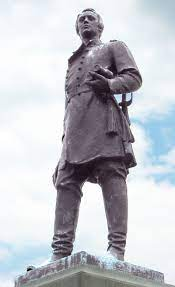No battle of the Civil War has captured the popular imagination more than the three-day affair at Gettysburg (July 1-3). As the quintessential battle of the War Between the States, if not American history in general, thousands of participants and contemporary writers were eager to maximize the drama through incredible or moving stories. Commanding officers were keen to enhance or restore their reputations and often sought to tear down others’. As a result, the events at Gettysburg have given rise to plenty of myths, most of which were credulously (though sometimes understandably) reported as fact by historians and documentarians.
#1:
The Confederates Came to Gettysburg for Shoes
The story is that divisional commander General Henry Heth heard of a shoe factory in Gettysburg. Desperate to find footwear for the bare feet of his soldiers, he ordered a force towards the town for this express purpose. Thus the greatest battle of the Civil War began over shoes. This is a nice story showing how simple causes can lead to massive effects. However, Heth’s report states that he ordered his men into town to find all manners of supplies, shoes included. He added “especially shoes” because, for men marching hundreds of miles, exposed feet were a major concern. The Confederates would have had to scour the shops or try to take from civilians to find them, because Gettysburg in fact had no shoe factory.
#2:
The Dutch Run Again
 |
| Statue of Francis Barlow at Gettysburg |
Throughout July 1 the Union Army sent reinforcements north of Gettysburg to form a line and meet the also gradually expanding Confederate force. The defensive line, which had been holding up nicely, finally came undone when the German immigrants of the XI Corps panicked and fled, enabling the Confederates to unravel it and send the Unions running through town. The Germans, or “Dutch,” ran just like they did at Chancellorsville when Stonewall Jackson had marched into their flank. It was not cowardice that lost the first day of Gettysburg, however. It was in fact a tactical blunder on the part of General Francis Barlow, a divisional commander. Instead of connecting his left flank with Carl Schurz’s division, he advanced to the height of Blocher’s Knoll so the enemy could not use it. What resulted was an overextended salient which the Confederates were able to break through. The largely German XI Corps had no choice but to retreat with Confederates pouring into their right flank. Some critics also (more incorrectly) claimed that these men almost lost Cemetery Hill on July 2 by running again.



